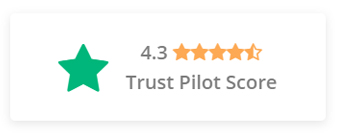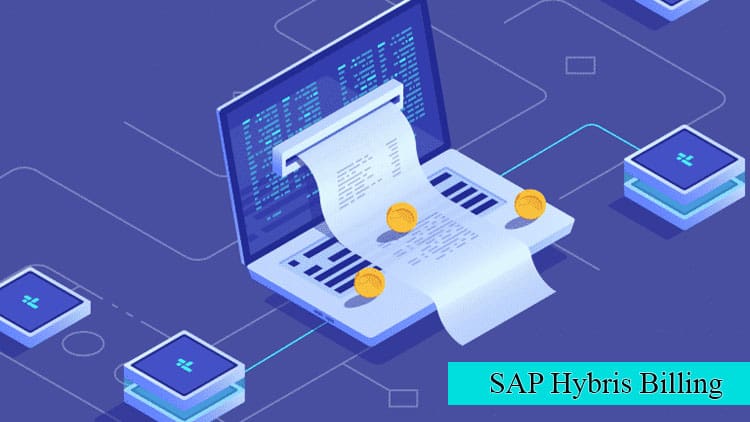Key Features of SAS online training
The SAS online training will help you gain mastery over the business intelligence and analytics domains.
SAS Online Training
Flexible Program Delivery
Complete Online Assistance
Self Paced Learning Option Available
Trending Courses
Better Course Fee
Structure than Market.
Why choose us
Self-paced Videos
- Learn Your Favourite Skill In Your Spare Time
- Gain Practical Training With High Quality Recorded Videos Taught By Industry Experts.
- Watch Complex Topics As Many Times As Possible.
- Gain Industry-Oriented Skills.
- Solve Your Doubts With Real-Time Expert Trainers.
Live Online Training
- Choose The Time That Suits You.
- Attend A Demo Before Joining A Course
- Solve Your Doubts In Real-Time
- Interact With The Trainer And Share Your Views
- Get Access To Google Drive To Revise The Topics.
- Get The Guidance To Clear The Certification Exam
Corporate Training
- Train Your Workforce With The Latest Skills.
- Customize The Course Content To Match Your Requirements.
- Provide The Required Knowledge To Your Human Resource To Clear The Certification Exam.
- Schedule Training As Per Your Requirement.
- Choose Your Modes Of Training Like Live Online/ Classroom/ Self-Paced.
SAS Training Overview :
This SAS Training Online From Hyderabad course offered by SK Trainings will help you gain expert knowledge in SAS programming and Analytics. Our expert trainer will help you learn major concepts right from the basics to advanced level. In this course you will gain mastery in SAS concepts such as SAS macros, procedure, Machine Learning, statistical analysis, PROC SQL, and decision trees. As a part of training you will be working on real-life projects and be prepared for clearing the certification. Get the Best SAS Training from the expert trainers by joining SK Trainings.
Course Objectives :
This SAS Online Training From Hyderabad will help you become a master in the domains of business intelligence and business analytics. Upon the successful completion of this SAS course you will gain all the knowledge in databases, reading spreadsheets, manipulation of data, data debugging and a lot more other topics. You will also gain mastery in concepts such as data mining, modeling techniques, data analytics, predictive analysis , visualization of data, etc. Get the best SAS course from the industry experts.
- SAS fundamental concepts their importance
- SAS Enterprise Guide
- SAS Environment
- operators, functions and logic statements
- Base SAS and Advanced SAS
- Summary reports and SAS graphs
- SAS certification preparation
Following are the professionals who get benefited from learning this course:
- Architects,
- Data Warehousing
- Business Intelligence Professionals
- IT and Software Developers
- Project Managers
- Big Data and Analytical Professionals
There are no prerequisites to enrol into this SAS training course. If you have a basic knowledge of SQL then it would be an added advantage for you.
- SAS is one of the widely used Analytics tools in the IT world and the demand for the Analytics tools is expected to grow exponentially in the near future.
- There is a huge demand for the certified SAS developers across the globe.
- Indeed.com, statistics shows that the average salary received by a SAS programmer is $102,000
Yes, upon the successful completion of the SAS training you will receive the course completion certificate from SK Trainings. This certificate is valid across all the top MNCs and simplifies your job search process.
Yes, you will get all assistance from the SAS experts to clear your certification exam. Moreover you will be provided with the experts designed SAS course material to clear your certification exam.
SAS Course Content :
- History of SAS
- SAS comes in ERP sector or not? Why?
- What is Clinical Research Study?
- What is SOP (Standard Operating Procedure)?
- What is DBMS?
- What is SAP (Statistical Analysis Plan)?
- Managing windows in SAS window environment
- Why using the SAS in different sectors.
- How to use the data step to read and manipulate complex forms of data
- Write Data and Proc steps.
- Data step compile and execution
- Read any type of external raw data into SAS
- Reading raw data SAS environment into DATA SET using Input statement & advance INLIFE statement options
- Working with Data Storage in SAS libraries creation for user defined libraries and multi-engine architecture
- Reading data from data set to another data set.
- To manage the SAS window environment used with global options.
- To manage existing data with controlling statements and expressions
- Creating Summary Information, SAS Functions, Transforming Data
- Changing variable types using the PUT and INPUT functions summarizing data files
- To expert data from data sets to delimiter files using with data set block
- Understand error messages in the SAS Log and debug your program
- Using Do loops for repetitive calculations and processing
- Using Arrays to process across an observations and processing
- Using the update statement to update data in existing dataset.
- Using the MODIFY statements to update and modify data in place
- Merging concepts
- Concatenation concept in merging
- Interleaving concept and merging
- Different kind of match merging using MERGE statement using the contribution (IN=) option in merge concept
- Using ODS concept to generate reports
- Role of ODS concepts to reporting SAS output
- To generate SAS output in different panels like RTF, HTML,PDF and XML Using ODS
RELEVANT BASE SAS PROCEDURES
- IMPORT PROCEDURE
- EXPORT PROCEDURE
- DBLOAD PROCEDURE
- COPY PROCEDURE
- CPORT PROCEDURE
- CIMPORT PROCEDURE
- DELTE PROCEDURE
- SETININT PROCEDURE
- OPTIONS PROCEDURE
- TEMPLATE PROCEDURE
- APPEND PROCEDURE
- COMPARE PROCEDURE
- SORT PROCEDURE
- DATASETS PROCEDURE
- PRINTTO PROCEDURE
- FORMAT PROCEDURE
- TRANSPOSE PROCEDURE
- ACCESS PROCEDURE
- PRINT PROCEDURE
- TABULATE PROCEDURE
- REPORT PROCEDURE
- CHART PROCEDURE
- GCHART PROCEDURE
- PLOT PROCEDURE
- GPLOT PROCEDURE
- MEANS PROCEDURE
- SUMMARY PROCEDURE
- UNIVARIATE PROCEDURE
- CORR PROCEDURE
- FREQ PROCEDURE
- ZTEST PROCEDURE
- FREQ PROCEDURE
- RANK
- TTEST PROCEDURE
- ANOVA PROCEDURE
- REG PROCEDURE
- GLM PROCEDURE
- Introduction to SQL Concepts
- Create new tables, indexes , views and reports
- What are Cartesian Products , what is join
- Innner , FULL,OUTER,LEFT and RIGHT Joins
- Union join,Cross joins
- Set Operator us such as union and intersection joining multiple tables
- HOW TO USE SAS MACROS IN SQL
- How to retrieve Raw data different from DATABASES to SAS environment using SQL Statements
- To create table in different databases using SAS sql statement
- To manage in different databases using SAS Sql Statements
- Uses of pass through facility
- How to communicate with other database like Access, Oracle, DB2
- To control and manage other databases from the SAS.
- Macro concepts&Advantages
- SAS Macro Language
- Macros And Macro Variables
- Creating Macro Variables & Using Macro Variables
- Creating Modular Code With Macros
- Invoking A Macro
- Adding Parameters to Macros
- Writing Macros With Conditional Logic
- Using Various Procedures in Macro Variables
- Nesting of Macros
- Multiple And Multi-Level Macros
- Macro Functions
SAS (Statistical Analytics System)
- SAS is a software suite for advanced analytics, multivariate analyses, business intelligence, data management and predictive analytics
- It is developed by SAS Institute.
- SAS provides a graphical point-and-click user interface for non-technical users and more advanced options through the SAS language.
The following are the four capabilities in SAS Framework
1. Access: As we can learn from the figure, SAS allows us to access data from multiple sources like an Excel file, raw database, Oracle database and SAS Datasets. 2. Manage: We can then manage this data to subset data, create variables, validate and clean data. 3. Analyze: Further, analysis happens on this data. We can perform simple analyses like frequency and averages and complex analyses including regression and forecasting. SAS is the gold standard for statistical analyses. 4. Present: Finally we can present our analysis in the form of list, summary and graphic reports. We can either print these reports, write them to data file or publish them online.
Stop statement causes SAS to stop processing the current data step immediately and resume processing statement after the end of current data step.
There are two data types in SAS. Character and Numeric. Apart from this, dates are also considered as characters although there are implicit functions to work upon dates.
SUM function returns the sum of non-missing arguments whereas “+” operator returns a missing value if any of the arguments are missing.
Suppose value of a variable PayRate begins with a dollar sign ($). When SAS tries to automatically convert the values of PayRate to numeric values, the dollar sign blocks the process. The values cannot be converted to numeric values. Therefore, it is always best to include INPUT and PUT functions in your programs when conversions occur.
PROC SQL is a simultaneous process for all the observations. The following steps happen when PROC SQL is executed:
1. SAS scans each statement in the SQL procedure and check syntax errors, such as missing semicolons and invalid statements. 2. SQL optimizer scans the query inside the statement. The SQL Optimizer decides how the SQL query should be executed in order to minimize run time. 3. Any tables in the FROM statement are loaded into the data engine where they can then be accessed in memory. 4. Code and Calculations are executed. 5. Final Table is created in memory. 6. Final Table is sent to the output table described in the SQL statement.
TRANWRD function replaces or removes all occurrences of a pattern of characters within a character string.
Data is central to every data set. In SAS, data is available in tabular form where variables occupy the column space and observations occupy the row space.
- SAS treats numbers as numeric data and everything else falls under character data. Hence SAS has two data types numeric and character.
- Apart from these, dates in SAS are represented in a special way compared to other languages.
- A SAS date is a numeric value equal to the number of days since January 1, 1960.
- Apart from Date Values, there are many tools to work on dates such as informats for reading dates, functions for manipulating dates and formats for printing dates.
We can use ‘do until’ or ‘do while’ to specify the condition.
Yes, it depends on how you use the variable. There are some numbers we will want to use as a categorical value rather than a quantity. An example of this can be a variable called “Foreigner” where the observations have the value “0” or “1” representing not a foreigner and foreigner respectively. Similarly, the ID of a particular table can be in number but does not specifically represent any quantity. Phone numbers is another popular example
The number of observations is limited only by computer’s capacity to handle and store them.
Prior to SAS 9.1, SAS data sets could contain up to 32,767 variables. In SAS 9.1, the maximum number of variables in a SAS data set is limited by the resources available on your computer.
- Variables/Columns in position order.
- Rows ordered as they appear in data set.
- If the variable is used as group variable, rows that have the same values are collapsed.
- Group variables produce list report whereas order variable produces summary report.
You can use the OUTPUT statement to save summary statistics in a SAS data set. This information can then be used to create customized reports or to save historical information about a process.
You can use options in the OUTPUT statement to
1. Specify the statistics to save in the output data set, 2. Specify the name of the output data set, and 3. Compute and save percentiles not automatically computed by the CAPABILITY procedure.
If you don’t want to process certain variables and you do not want them to appear in the new data set, then specify drop = data set option in the set statement.
Whereas If want to process certain variables and do not want them to appear in the new data set, then specify drop = data set option in the data statement.
The main difference is that while reading an existing data set with the SET statement, SAS retains the values of the variables from one observation to the next. Whereas when reading the data from an external file, only the observations are read. The variables will have to re-declared if they need to be used.
PROC MEANS produces subgroup statistics only when a BY statement is used and the input data has been previously sorted (using PROC SORT) by the BY variables.
PROC SUMMARY automatically produces statistics for all subgroups, giving you all the information in one run that you would get by repeatedly sorting a data set by the variables that define each subgroup and running PROC MEANS. PROC SUMMARY does not produce any information in your output. So you will need to use the OUTPUT statement to create a new DATA SET and use PROC PRINT to see the computed statistics.
An important difference between the DO UNTIL and DO WHILE statements is that the DO WHILE expression is evaluated at the top of the DO loop. If the expression is false the first time it is evaluated, then the DO loop never executes. Whereas DO UNTIL executes at least once.
Let us solve your all SAS online training doubts.
Talk to us for a glorious career ahead.
+91 9441803173
Frequently Asked Questions
We make sure that you are never going to miss a class at SK Trainings. If you do so you can choose from either of the below two options.
- You can view the recorded sessions sent to you on a regular basis.
- You can also attend the other live batch for the missed session.
The industry trainers who are working with us are highly qualified and possess a minimum of 10-12 years of experience in the IT field. We follow a critical procedure while selecting a trainer which include profile selection, screening, technical evaluation and validating presentation skills. The trainers who get top ratings by students are given priority and continue to teach with us.
You need not worry about anything. Once you join SK trainings, you will get lifetime assistance from our support team and they are available 24/7 to assist you.
Online training is an interactive session where you and the trainer are going to connect through the internet at a specific time on a regular basis. They are interactive sessions and you can interact with trainers and ask your queries.
Yes, you will be eligible for two types of discounts. One is when you join as a group and the other is when you are referred by our old student or learner.
Yes, you will gain lifetime access to course material once you join SK Trainings.
Our trainer will provide you server access and help you install the tools on your system required to execute the things practically. Moreover, our technical team will be there for you to assist during the practical sessions.
Yes, Sk Trainings accepts the course fee on an instalment basis to make the students feel convenient.
SK Trainings is one of the top online training providers in the market with a unique approach. We are one-stop solutions for all your IT and Corporate training needs. Sk Trainings has a base of highly qualified, real-time trainers. Once a student commits to us we make sure he will gain all the essential skills required to make him/her an industry professional.
Till now SK Trainings has trained thousands of aspirants on different tools and technologies and the number is increasing day by day. We have the best faculty team who works relentlessly to fulfill the learning needs of the students. Our support team will provide 24/7 assistance.
SK Trainings offers two different modes of training to meet student requirements. Either you can go for Instructor led-live online classes or you can take high-quality self-paced videos. Even if you go with self-paced training videos you will avail all the facilities offered for the live sessions students.
Yes, each course offered by the SK Trainings is associated with Two live projects. During the training, students are introduced to the live projects implementation process.
Yes, absolutely you are eligible for this. All you need to do is pay the extra amount and attend live sessions.
You must experience the course before enrolling.
SAS Training Certification
Train yourself into a certified SAS online course by enrolling in the SK Training’s SAS online training. You will get thorough knowledge by our expert trainer and also for SAS programing and Analytics. You can become an expert in areas such as SAS macros, procedure, Machine Learning, statistical analysis, PROC SQL, and decision trees. Real-time knowledge is obtained by working in UI projects. Join the SK Trainings SAS Online Certification Course and learn from the expert SAS onlines.
Get Certified
Need to know more about SAS online training and Certification
Avail Free Demo Classes Now



Trending Courses
Our core aim is to help the candidates with updated and latest courses. We offer the latest industry demanded courses to the individuals. Following are some of the trending courses.
Wish to Know More About SAS Online Course & Training Methodology
If you want to judge how good a course is then you got to experience it. At SK Trainings you will get demo classes for free. There will be no fabrication in these classes as they are live. Feel It - Learn & Then enroll for the course.

















